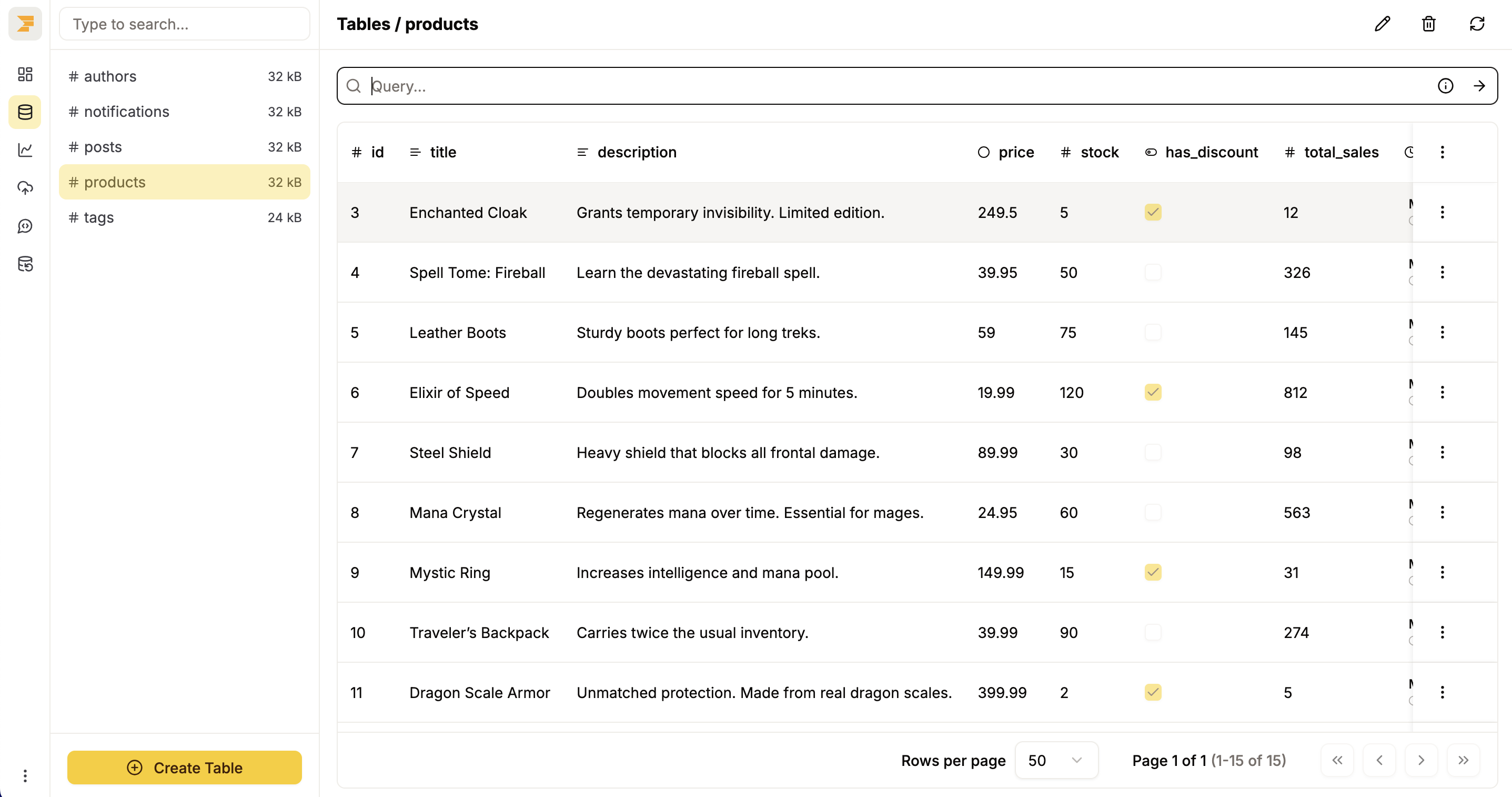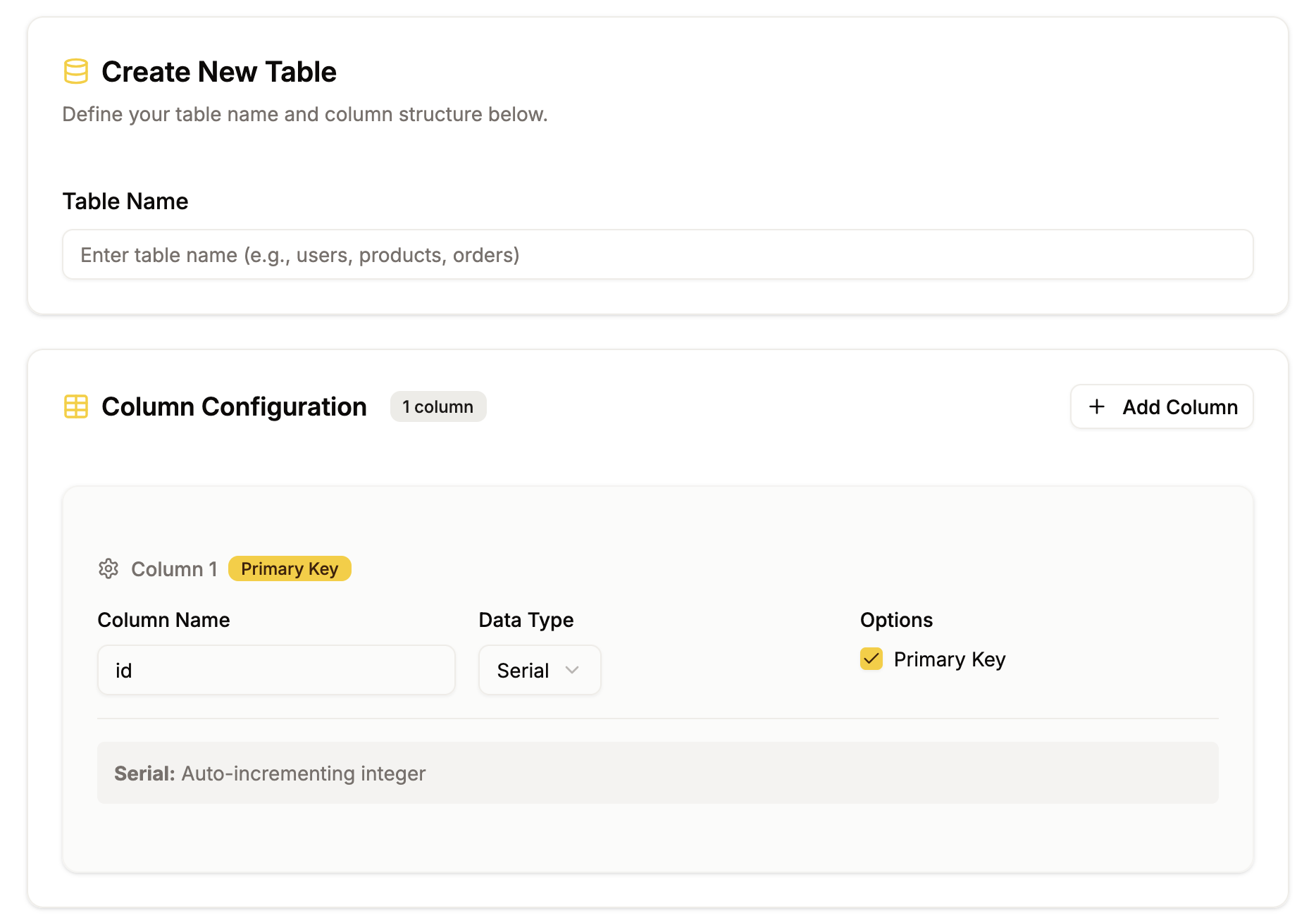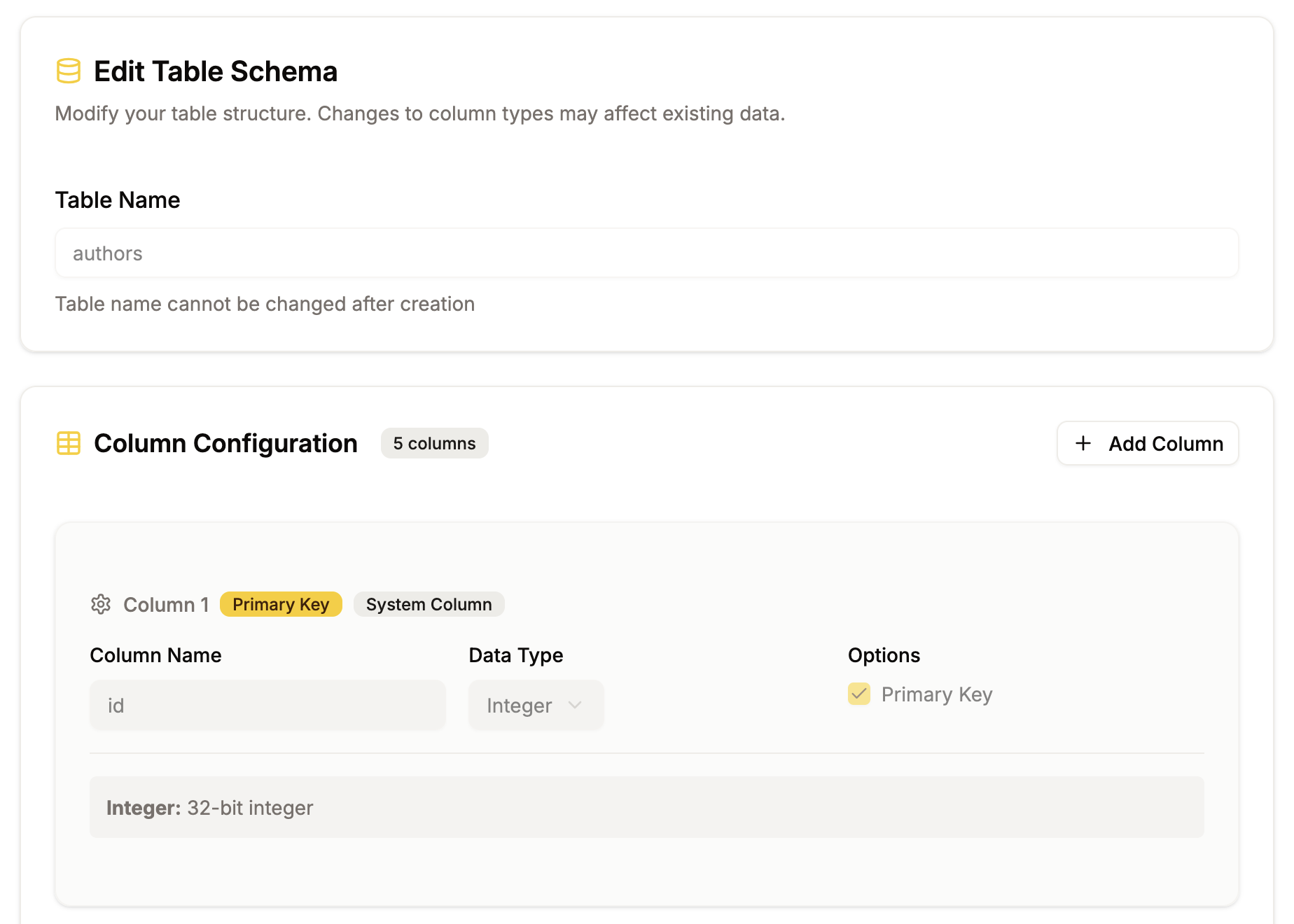Introduction
Each project gets a separate database. That’s where all contents are stored isolated from other projects. We use PostgreSQL as primary databsae. If you’ve worked with PostgreSQL and databases in general, you should already be familiar with these concepts.Tables
 Tables are the backbone of your app. That’s where your data lives. Each table becomes a dynamic REST endpoint. These will become available at
Tables are the backbone of your app. That’s where your data lives. Each table becomes a dynamic REST endpoint. These will become available at https://{projectDatabaseName}.{host}/{tableName}. For example: https://udbd44e93dc4ed54403940d07470289cf4e.fluxend.app/notes
Create
You can clickCreate Table button at the bottom when viewing any table. This takes you following interface
 You can add any number of columns with types as desired. You may also define additional constraints like
You can add any number of columns with types as desired. You may also define additional constraints like Primary Key. We’re working on supporting more constraints
Update
You can click icon on top right of table view. This will take you to edit table page. You can add, remove and update column names, types, lengths and adjust restrictions.
Columns
You can add any number of columns to your table. Each column type comes with its own set of restrictions. We’ve implemented as many checks as possible in the frontend to give you clear, helpful messages when something isn’t allowed. However, we’ve deliberately avoided over-restricting things on the frontend. In some cases, you might encounter raw error messages directly from PostgreSQL – this is intentional for now, as it ensures you see the exact cause without unnecessary abstraction. Changing a column’s type is possible in many cases, but not always. Some types can be converted to others safely, while certain conversions can cause data loss or unexpected results. Always double-check your data when changing column types to avoid surprises.Rows
 You can create, update, and delete any rows in a table. All editable fields can be updated by double-clicking and then typing new values. If you want to delete a row, click the three dots next to it. Then click
You can create, update, and delete any rows in a table. All editable fields can be updated by double-clicking and then typing new values. If you want to delete a row, click the three dots next to it. Then click Delete
Indexes
Indexes are only available as API endpoints. UI will become available in next releases
Functions
Functions are only available as API endpoints. UI will become available in next releases
Triggers
Triggers are currently planned for upcoming releases.
Row Level Security (RLS)
RLS is currently planned for upcoming releases.
